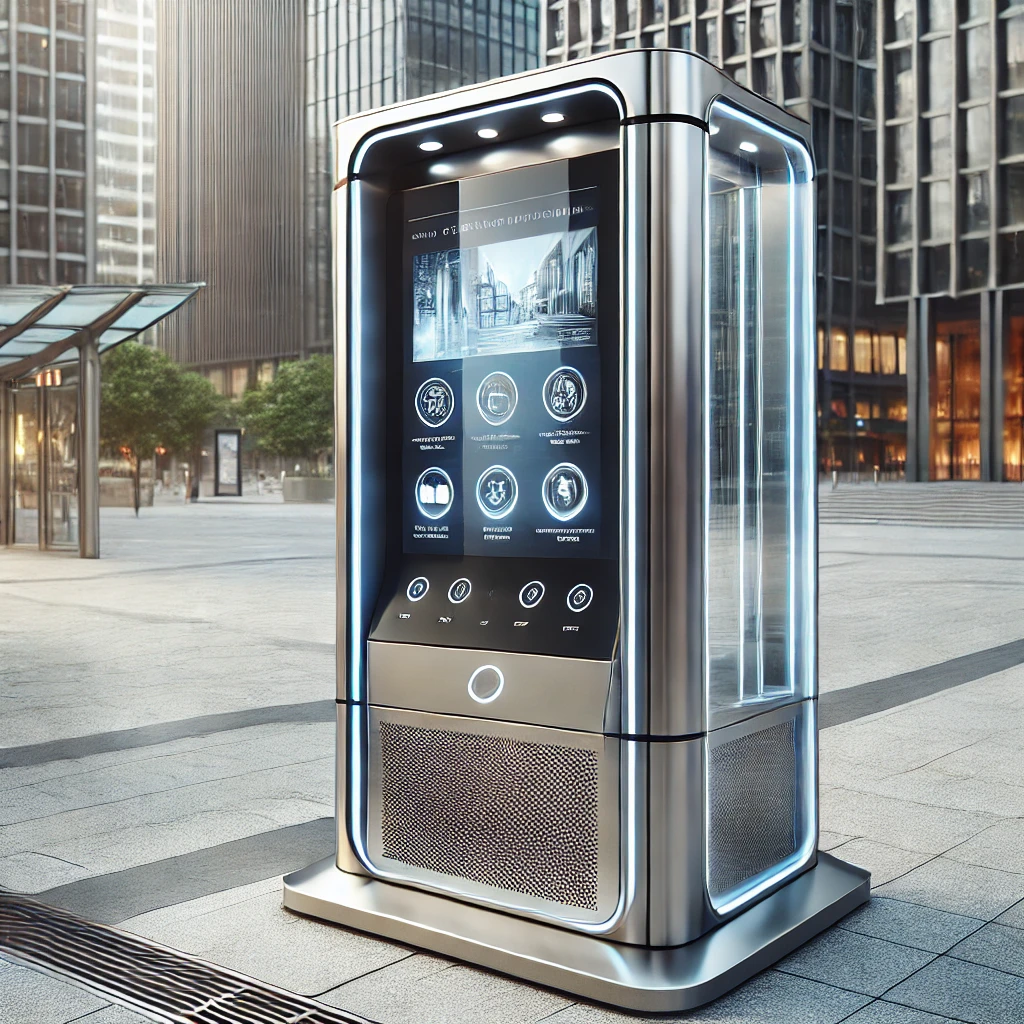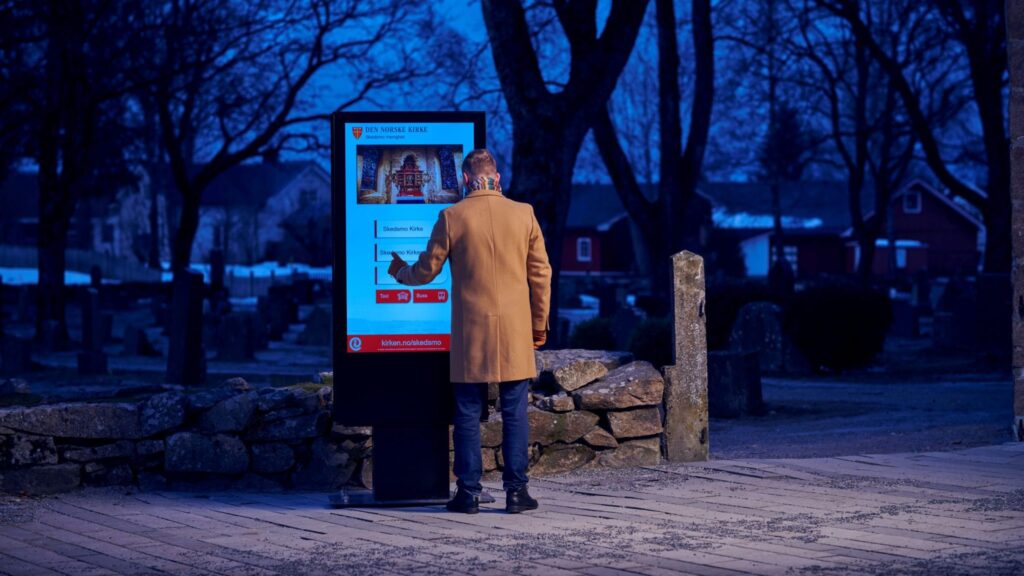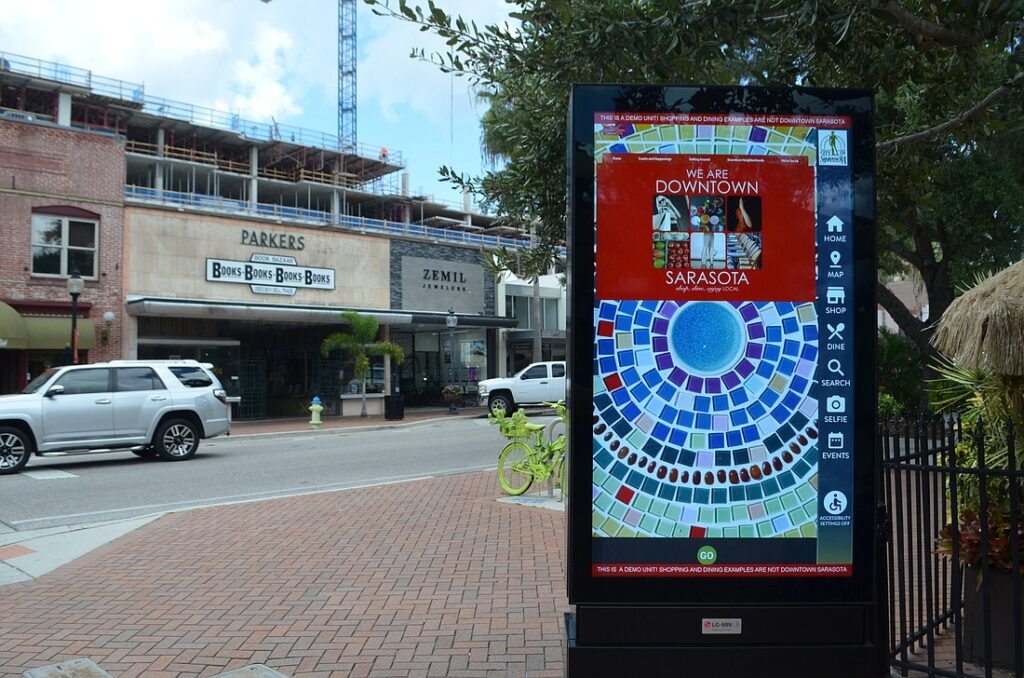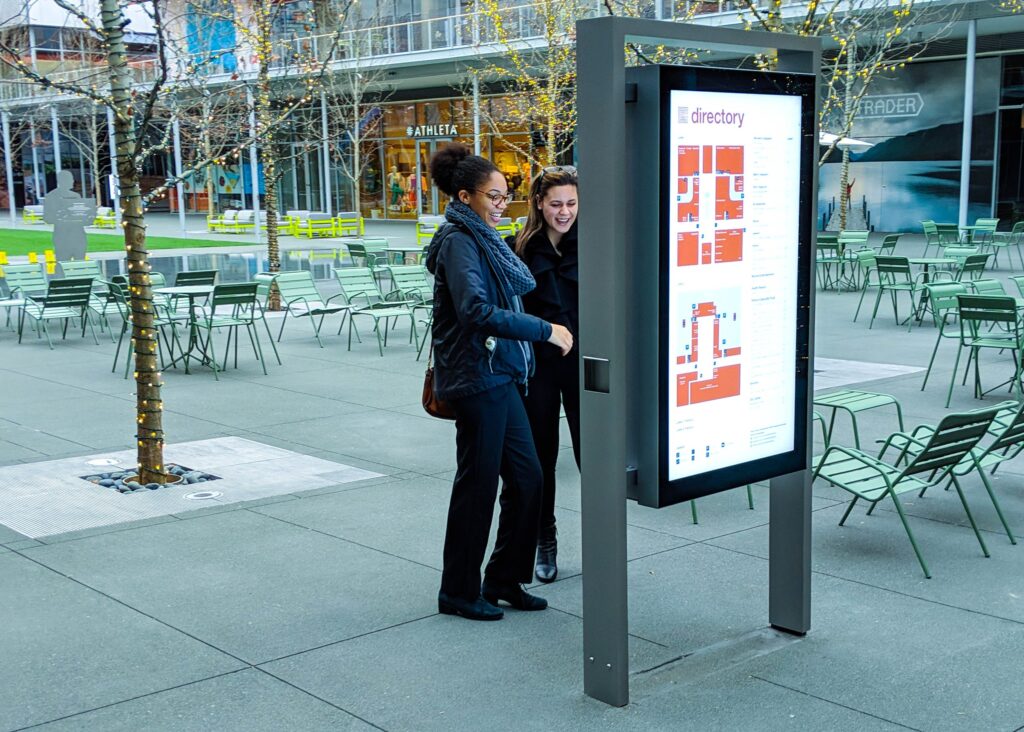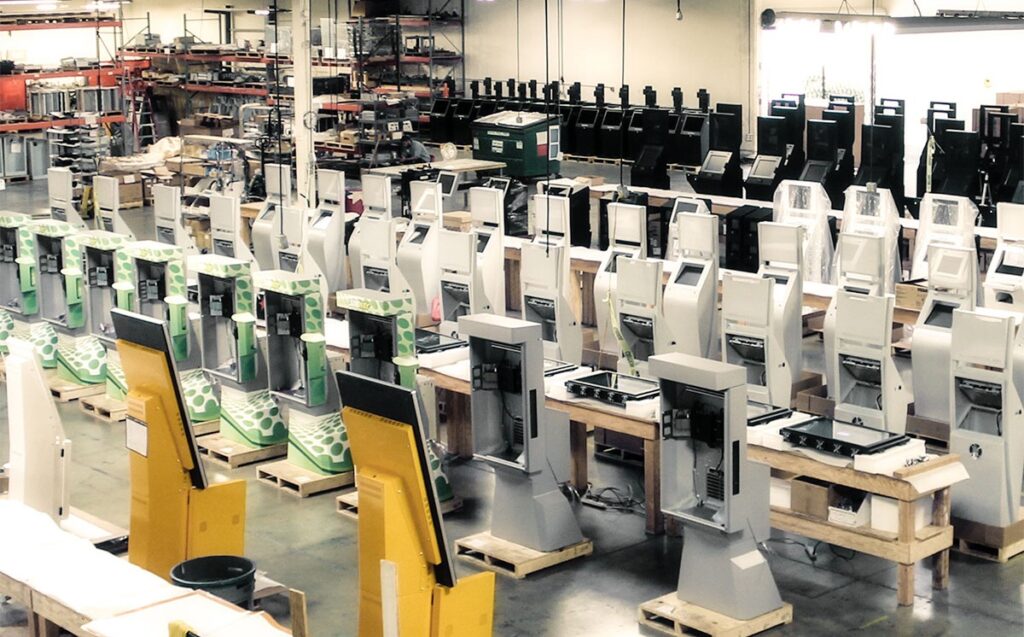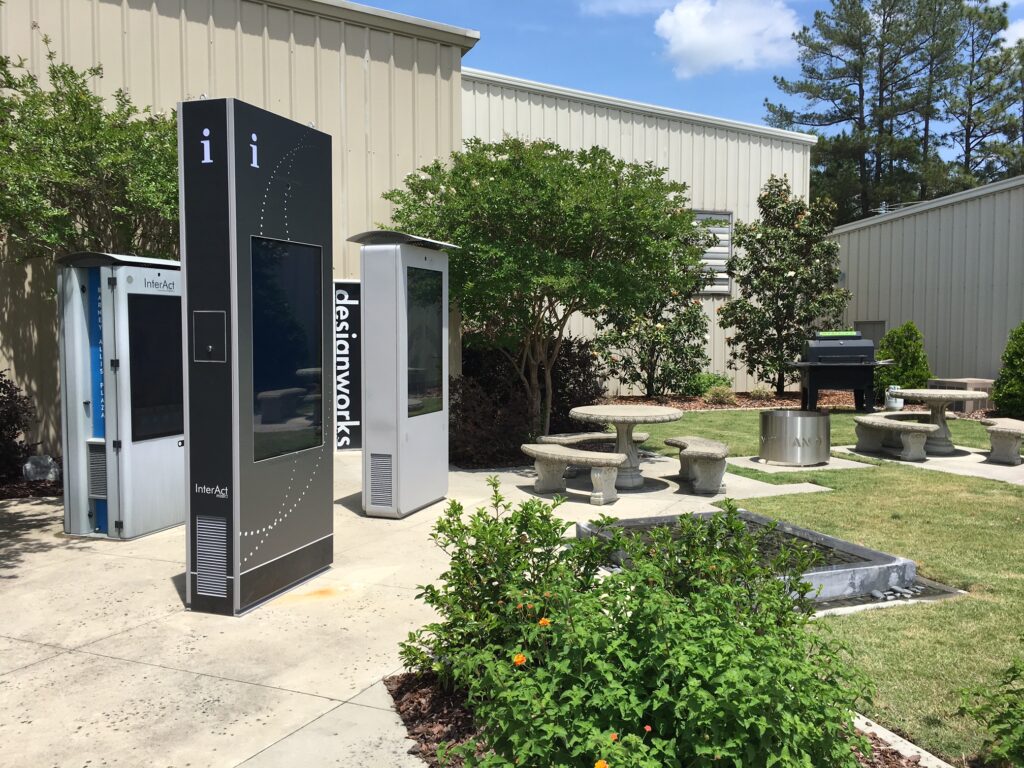Outdoor kiosks have become integral to modern urban landscapes, serving a multitude of purposes from advertising and wayfinding to ticket sales and information dissemination. Understanding the cost and durability of an outdoor kiosk is crucial for cities and businesses looking to invest in outdoor digital infrastructure.
Indoor vs. Outdoor Kiosk: Placement and Mobility
The primary difference between indoor and outdoor kiosks lies in their placement and mobility. Indoor kiosks benefit from the ability to be moved easily within a building depending on foot traffic and the need for visibility. They are generally less robust because they are protected from the elements. In contrast, outdoor kiosks are designed to be more durable and are often permanently installed. Installation typically involves securing them on a concrete foundation to withstand various environmental conditions, making relocation a more complex and costly process.
Durability of an Outdoor Kiosk and Vandalism Concerns
Outdoor kiosks are built to endure harsh weather conditions, from extreme heat to sub-zero temperatures. However, their physical durability against vandalism is a significant concern. While these kiosks are sturdy against the elements, they are not impervious to deliberate damage such as hits from a baseball bat or other strong impacts. Additionally, the software security of these kiosks is a critical issue; they can be susceptible to hacking, potentially leading to unauthorized content display or functional disruptions.
The Cost of Outdoor Kiosks
The financial outlay for outdoor kiosks is considerable, reflecting their complexity and the technology involved. Here’s a breakdown of typical costs associated with outdoor kiosks:
Initial Costs and Installation: The base price for the kiosk units themselves ranges from $20,000 to $30,000. Additional costs include around $5,000 to $10,000 for the concrete pad and foundation and $3,000 to $5,000 for shipping. Setting up a reliable power source and network connections adds further to the initial expenditure.
Software and Maintenance: Software licensing fees can range from $500 to $2,500 annually per screen. If the kiosk features dual screens, this cost doubles. Regular maintenance and updates to the software are necessary to ensure functionality and security.
Total Investment: Including all hardware, installation, and software costs, a single outdoor kiosk can cost between $40,000 and $50,000. This does not include ongoing maintenance and operational costs for the Durability of an Outdoor Kiosk.
Timeframe for Deployment
Custom-built kiosks tailored to specific customer requirements can take between 9 to 13 months to deliver, not accounting for potential delays that can extend this timeframe. The customization process, manufacturing, and shipping contribute to this extended period.
Economic Viability and Recoupment of Costs
Securing a return on investment for outdoor kiosks can be challenging. The high upfront costs, coupled with the time and effort required to secure advertisers or generate revenue through sales (e.g., tickets), make it a long-term investment. The process of engaging advertisers is time-intensive, and once an advertising slot is sold, it cannot be sold again during that period, limiting revenue potential for that duration.
Considerations for Cities and Businesses
For cities and businesses considering the deployment of outdoor kiosks, the decision should factor in the long-term benefits versus the immediate financial and logistical challenges. While they offer valuable services and can enhance the functionality of public spaces, the investment into outdoor kiosks requires careful planning regarding placement, security measures, and content management to ensure they meet the intended objectives and secure the necessary returns.
In summary, outdoor kiosks represent a significant investment in public and commercial infrastructure. They require substantial financial, technological, and operational commitments but can offer considerable benefits in terms of service delivery and information dissemination when implemented thoughtfully and strategically.
Strategic Implementation and Long-term Benefits
Integration into Urban Infrastructure
As cities continue to evolve, integrating technology like outdoor kiosks can significantly enhance the urban experience. These installations not only serve as informational beacons but also help in managing city services and facilitating tourism. They can act as wayfinding aids in large metropolitan areas, guiding both residents and visitors alike, which in turn boosts local economies by promoting accessibility to various attractions and businesses.
Potential Revenue Streams
Despite the high initial costs, outdoor kiosks can open up several revenue streams. Advertising is a primary source, especially in high-traffic areas where visibility is guaranteed. Additionally, kiosks can serve as ticketing stations for public transport or local attractions, creating a convenient point of sale that encourages usage and increases sales.
Community Engagement
Beyond economic factors, outdoor kiosks can enhance community engagement. They can be used to display local news, weather updates, event notifications, and emergency alerts, keeping the public informed and connected. In some cases, they can also facilitate community feedback and interaction, which can be invaluable for city planning and management.
Long-term Cost Efficiency
While the upfront costs are steep, the durability and multifunctionality of outdoor kiosks can lead to long-term cost efficiencies. With proper maintenance, these kiosks can last many years, providing continuous service with minimal need for replacement. Their ability to withstand harsh weather conditions and the high-traffic nature of public spaces makes them a reliable investment in technology infrastructure.
Challenges and Considerations
Stakeholders must consider potential challenges such as vandalism and technological failures. Implementing robust security measures, both physical and software-based, can mitigate these risks. Furthermore, regular maintenance and updates will ensure that the kiosks remain functional and secure against cyber threats.
The decision to invest in outdoor kiosks should involve a comprehensive analysis of costs, benefits, and strategic goals. For cities and businesses aiming to modernize and improve public interfaces, outdoor kiosks offer a blend of advertising potential, public service, and technological sophistication. However, the success of such an investment heavily depends on thoughtful planning, effective implementation, and ongoing management. With the right approach, outdoor kiosks can become pivotal elements in urban landscapes, enhancing the way cities interact with their inhabitants and visitors.
